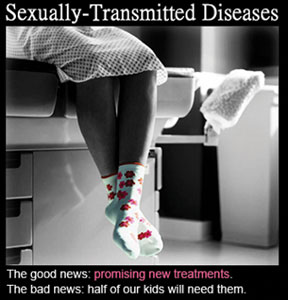

CDC: Half of sexually transmitted infection occur among youth
By Maya Rhodan
WASHINGTON, D.C. (NNPA) – New estimates released by the Centers of Disease Control and Prevention suggest that about 20 million sexually transmitted infections are contracted every year, half of which occur among those ages 15-24.
The CDC estimates there were about 110 million sexually transmitted infections, or STIs, among men and women across the country in 2008. The treatment of these infections cost about $15.6 billion, according to two recently released reports by the CDC. .
“This analysis reveals the severe health and economic consequences of sexually transmitted infections, highlighting the impact of nation’s youth,” says Dr. Catherine Satterwhite, a co-author of the report. “There is an urgent need for prevention, not only for individuals, but to save our nations billions of dollars each year.”
The latest data on STIs was published in the Journal of Sexually Transmitted Diseases. It provides the most recent snapshot of the prevalence of the eight most common STIs, including gonorrhea, chlamydia, herpes, HIV and the most prevalent of the infections, HPV or human papilloma virus.
“About 70 percent of new infections are HPV,” Satterwhite says. “It is very common infection.”
In 2008, 79 million people were infected with HPV, 17 million of whom were between the ages of 15-24. The virus, like all STIs, is preventable but more preventable than others given that two vaccines have been licensed for use by the Food and Drug Administration.
The FDA licensed the HPV vaccine Gardasil for use in 2006 to protect men and women against the four types of HPV that lead to cervical cancer and genital warts.
Three years later, Cervarix was licensed to vaccinate women ages 10-25.
“A lot of the [HPV] infections that we see clear the body on their own, but the vaccine can help prevent the types that cause the most adverse effects,” says Satterwhite.
HPV infections, along with HIV infections, according to the analysis bear the heaviest life-time cost burden per the number of cases–both infections cost billions of dollars to treat over the lifetimes of those infected.
People with HIV are estimated to pay between $200,000-$380,000 throughout their lifetimes for treatment.
“HIV is a lifelong infection, it damages immune system over time. It’s really expensive to treat HIV alone and what happens after to the body one has it,” says Satterwhite.
The most significant finding in the reports is how easily infection can be avoided.
By practicing safe sex, speaking to partners about sexual history, and being tested regularly the cost and incidence of sexually transmitted infections could be significantly decreased.
The fact that the majority of new cases occur among those ages 15-24 suggests the need for more comprehensive sexual prevention and education efforts directed toward young people, according to experts.
Monica Rodriguez, the president and CEO of the Sexuality Information and Education Council, says the easiest time to get quality and medically accurate sexual health information to young people is while they’re in school.
“People don’t think about the fact that when young people are in school it’s the only time they could get any kind of formal sexuality information,” Rodriguez says. “Most employers aren’t having sex education class in the workplace during lunch. We have a window of opportunity to equip people with good knowledge they can use for their whole life.”
Rodriguez says it’s important for all students to receive quality and medically accurate information on sexual health.
“We have evidence that sexuality education makes a difference,” she says. “It helps young people delay the initiation, and young people who have gone through good programs are much more likely to use protection.
Because sexual education varies from state-to-state, with some students receiving comprehensive sexual education while others receive none at all, Satterwhite does not advise advocates to use this information to pass or fail current education methods.
“Medically based sexual education is one of many factors that can make a difference, but programs vary tremendously across the country,” Satterwhite says. “This information shouldn’t be used to say anything isn’t working. The highlight of this is that there’s a lot of opportunity for prevention and an urgent need for prevention efforts.”
She explains, “All of these diseases are preventable, some are even curable, but not treating them can lead to adverse conditions and even death.”


Be the first to comment